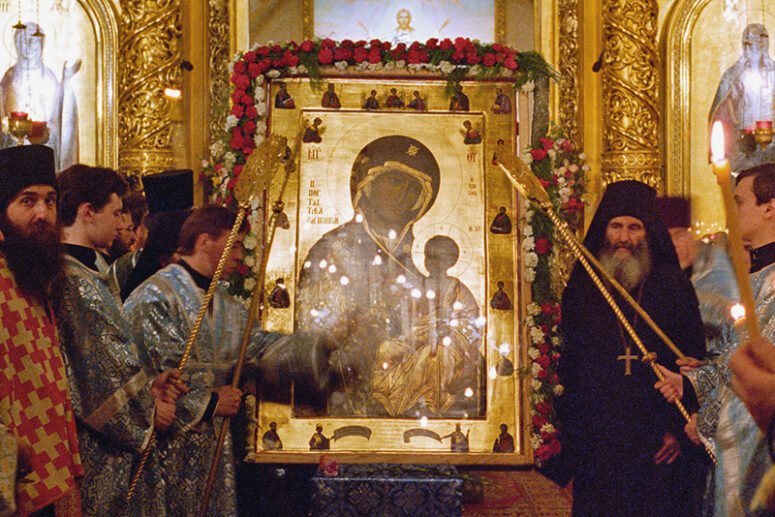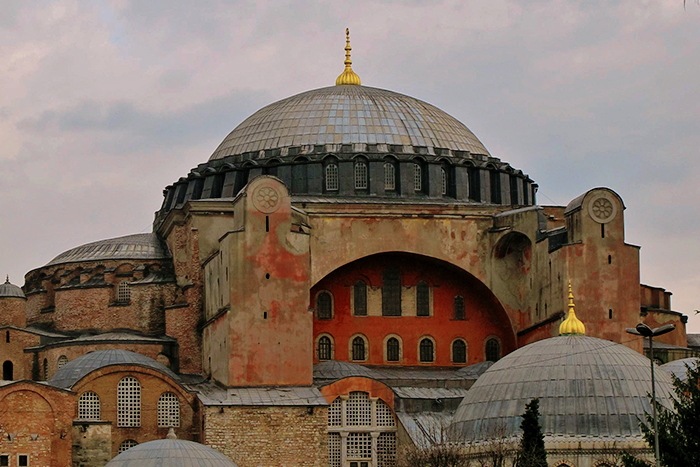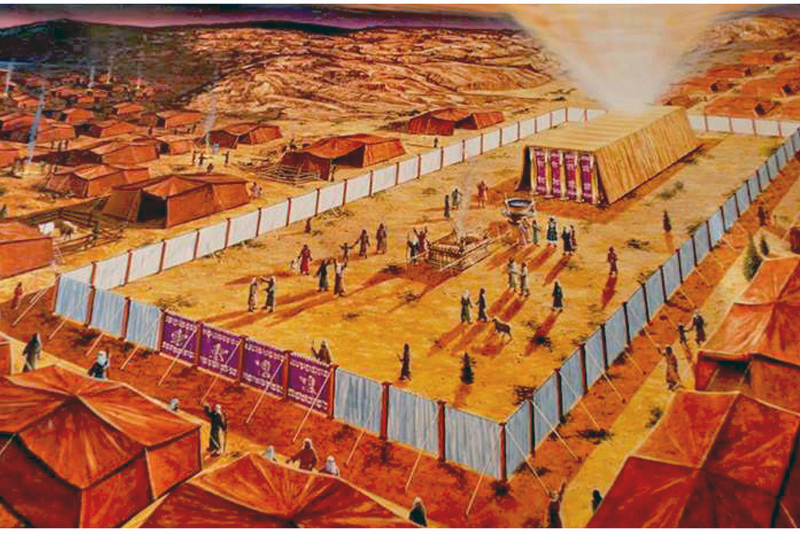
When I first began to investigate Orthodoxy, my main stumbling block to conversion was prayer to Mary and the saints. My Protestant formation had trained me (well, brainwashed me actually, for it was long on insistence and short on argument) that it was WRONG to pray to Mary and the saints. Doing so constituted Idolatry (with a capital “I”), which got God very upset. And by the way, the prohibition applied to prayer to angels as well. I remember this last insistence striking me as a bit odd. My guardian angel was, I was taught, right there next to me, so why couldn’t I ask him to pray for me? He obviously could hear me, so what was the problem? I got around the prohibition one night when I was alone and frightened and wanted my guardian angel to pray for me by praying to God and asking Him to tell my angel to pray for me. Even then it seemed to me a very round about way of doing things.
When I seriously began to investigate the legitimacy of prayer to Mary and the saints, I naturally spoke to both my Protestant and Orthodox friends about it. Was it okay, I inquired, to ask Mary and the saints to pray for me? “Obviously it is not okay. What’s wrong with you?”, answered my Protestant friends. “Obviously it is okay. What’s wrong with you?” answered my Orthodox friends. Both groups considered the issue so self-evident as to not require further thought. I was left to my own devices, and to a new examination of Scripture and of church history. Please allow me to share the results of this examination.
Any sensible examination of Scripture begins with the rejection of the Protestant view that the Bible somehow provides the rulebook for what may or may not be done. It is not a set of Ikea instructions for assembling a church, despite Harold “How-to-Live-Like-a-King’s Kid” Hill’s description of the Bible as “the manufacturer’s handbook”. Instead, the New Testament consists largely of a series of occasional documents dating from the first century which dealt with issues that arose within the first generation of Christian converts. Issues relating to later generations (such as whether or not to baptize babies born to the new converts, or how to train candidates for ordination) simply did not arise. This lacuna included questions like, “May we ask the martyrs to pray for us?” because such a category of martyrs did not exist during the first generation of converts.
The issue of the heavenly life and activity of Christians in heaven is somewhat difficult, because the issue is not directly addressed in the New Testament. It is not hard to see why: when the New Testament was being written, comparatively few Christians had died, and so that the question did not arise. The closest the New Testament comes to addressing the issue is St. Paul’s assertion that those who had died already would not be lost, but that Christ would raise them up and bring them with Him when He returned (1 Thessalonians 4:13f). That tells us nothing about what they might be doing in heaven now.
We therefore need to read the Biblical texts closely to discern from them the underlying presuppositions that the Christians inherited from Judaism. And when we do this, we see that the Judaism of the time assumed that those in heaven had knowledge of what was happening on earth and were praying for them. Thus, for example, we read in 2 Maccabees 15:12f that the martyred high priest Onias “was praying with outstretched hands for the whole body of the Jews”. Moreover, he was joined in his intercession by a man “distinguished by his gray hair and dignity and marvellous majesty and authority”. Onias revealed in the vision that “This is a man who loves the brethren and prays much for the people and the holy city, Jeremiah the prophet of God”.
We see the same conviction that those in heaven prayed for those on earth in the Book of Enoch, a composite work dating from the first century. Thus in Enoch 9:3 we read, “To you, the holy ones of heaven, the souls of men make their suit, saying, ‘Bring our cause before the Most High’”. Later on, in Enoch 39:5 we find the same idea that those in heaven were praying for those on earth: “My eyes saw the dwellings [of the holy] with His holy angels and they petitioned and interceded and prayed for the children of men”. In Enoch 99:3, the righteous on earth are told to “raise your prayers as a memorial, and place them as a testimony before the angels, that they may place the sin of the sinner for a memorial before the Most High”. In Enoch 104:1 we read that “in heaven the angels remember you for good before the glory of the Great One”. These texts reveal that at least some Jews in the first century believed that the angels in heaven were praying for those on earth and presenting their prayers to God. Those in heaven—Onias, Jeremiah, and the angels—were intimately involved in what was happening on earth.
This assumption clearly lies behind our Lord’s words that those in heaven rejoice over the repentance of a single sinner on earth (Luke 15:7), for how else could they know of the sinner’s repentance unless earth somehow lay open to the gaze of those in heaven? The same assumption also undergirds the image found in Hebrews 12:1, which uses an athletic race to portray the Christian struggle. We on earth are running the race of faith, cheered on by a “great cloud of witnesses” observing us from the heavenly stands.
And then there is the Book of Revelation. This text must be used carefully, with a full recognition of its special genre. It does not offer a literal behind-the-scenes peek at what is going on in heaven, like a journalist allowed to wander around backstage behind the curtain. But it does reveal the assumptions held by the Church at the time regarding the state of those in heaven. From this we learn that the angels brought the prayers of those on earth to God (Revelation 8:3-4)—exactly as the Book of Enoch said. Regarding the departed Christians, we learn that they are with Christ and are being comforted by Him for their struggles on earth (Revelation 7:13f). We also learn that they seem to know what is happening on earth: in Revelation 6:9-11 they clamour impatiently for judgment to be poured out on their oppressors, and in Revelation 16:4-7 they exult after the judgment has been poured out. It is clear from this that they know what is happening on earth while they are in heaven.
We may conclude from this close reading of the texts of the time that it was part of the Church’s faith in the first century that those in heaven interceded for those on earth.
This intimate unity of the saints in heaven with the saints still on earth found increased strength through the Resurrection of Christ, for by His Resurrection He abolished death (2 Timothy 1:10). This not only means that death cannot separate us from Christ; it also means that death can no longer separate Christians from one another. If the living and departed are both united to Christ, they are by virtue of this union also united to one another. Even while on earth all Christians are united in a bond of mutual prayer and intercession (Ephesians 6:18)—how much more will our departed brethren pray for us when they are closer to Christ in heaven? Salvation consists of sharing the glory of Christ, and becoming by grace what He is by nature (Romans 8:29). This means that we not only share His sonship, but also His heavenly glory, being continually transformed from one degree of glory to another (2 Corinthians 3:18). If we share His glory in this life, how much more in the next, when righteous men are made perfect? (Hebrews 12:23)
In summary, the New Testament lays the foundation for the invocation of saints, witnessing to the union of heaven with earth, and teaching Christians will share the heavenly glory of Christ in the next life.
Thus it is not surprising that when Christians began to be regularly martyred in the second century the Church should instantly have venerated them and asked for their prayers. If a person was known to be in heaven—as the martyrs, the apostles, and the Mother of God surely were—then the Church would naturally ask for their prayers.
In fact, prayers to the martyrs and the saints such as the Mother of God began to be offered early. The earliest extant Christian documents testify to the Church’s veneration of the saints and of Mary—and the Church’s reliance upon the prayers of both.
The cult of the martyrs emerged in the mid-second century—i.e. as soon as Christians began to be martyred. Thus we read of the martyrdom of St. Polycarp, bishop of Smyrna in 156 A.D.: after his martyrdom the Christians “took up his bones, which are more valuable than precious stones and finer than refined gold, and deposited them in a suitable place. There, when we gather together as we are able, with joy and gladness, the Lord will permit us to celebrate the birthday of his martyrdom in commemoration of those who have already fought in the contest and also for the training and preparation of those who will do so in the future” (Martyrdom of Polycarp, chapter 18). During these regular commemorations, the story of Polycarp’s martyrdom was read and his prayers invoked. Just as the Maccabean Jews believed that Onias and Jeremiah were praying for them, so the Christians of the second century believed that martyrs such as Polycarp were praying for them as well.
We see this early reliance upon the prayers of the saints in heaven as a fruit of the unity of the Church in many of the early Fathers. Thus Clement of Alexandria (d. ca. 215) wrote that the true Christian “prays in the society of angels, as being already of angelic rank, and he is never out of their holy keeping, and though he pray alone, he has the choir of the saints standing with him” (Miscellanies 7.12). Origen (d. ca. 253) in his work On Prayer wrote, “Not only does the High Priest [i.e. Christ] pray with those who pray genuinely, but so do the angels…So do the souls of the saints who have already fallen asleep” (chapter 11:1). St. Cyprian of Carthage (d. 258) assumed that the saints in heaven continued to pray for those on earth in the same unity of faith. In a letter to another bishop he wrote, “Let us remember one another in concord; let us on both sides always pray for one another…that if one of us shall go hence first, our love may continue in the presence of the Lord and our prayers for our brothers and sister not cease in the presence of the Father’s mercy” (Letter 56.5).
The earliest patristic references in the second century to Mary are also significant. Mary is compared to Eve, and second century Fathers such as Justin Martyr and Irenaeus say that just as death came through Eve, so life came through Mary. This Eve-Mary contrast, coming independently from different Fathers, witnesses to the Church’s early interest in the Mother of Christ as a figure of some importance. The Church knew from its Judaic inheritance that all those in heaven prayed for those on earth, and it was clear that Christ’s Mother was among those in heaven as a powerful intercessor.
Thus it is not surprising that the Church early began to ask for Mary’s intercession. An example of such prayer is the so-called sub tuum, a prayer dated to the third century. The prayer runs: “Beneath your compassion, we take refuge, O Theotokos. Do not despise our petitions in time of trouble, but rescue us from dangers, O only pure, only blessed one.” Such a fervent prayer showing such bold confidence in Mary’s intercession could not have arisen in a vacuum in which Mary was ignored. Its existence witnesses to an even earlier devotion to Mary (we note that the Protoevangelium, offering legendary details of Mary’s childhood, dates from the mid-second century). We note too that such Marian devotion could owe nothing to pagan influence, since in the third century the Church was still being battered by pagan persecution, and the Christians would hardly have been open to religious influences from the pagans determined to destroy them.
We have seen that both Scripture and early Church history alike witness to the Church’s practice of asking the departed saints to pray for us. This was the universal practice of the Church in both the east and the west until the time of the Reformation, when Protestant hostility to all things Catholic jettisoned it from the daily devotional life of Christians. This rejection can find no Biblical support, nor resonance in the history of the early martyric Church. The oft-cited 1 Timothy 2:5 which asserts that Christ is the only mediator between God and men is irrelevant to this discussion, for Mary and the saints are not mediators, but intercessors. A mediator is one who reconciles estranged parties (as Christ reconciled us to God from whom our sins had estranged us); an intercessor is merely one who prays for another, and that is all the Church asserts that Mary and the saints are doing. The venerable allergy of Protestants to the invocation of saints is solely the result of reactionary anti-Catholic teaching (i.e. prejudice), and of emotional unfamiliarity with the practice.
The Church has always venerated and prayed to Mary and the saints. The real issue is this: is the Church reliable and trustworthy or not? In the Creed we confess that we believe in one, holy, catholic, and apostolic Church. Do we really believe this? Do we believe that her teaching is reliable, and that Christ’s promises to lead her into all truth so that the gates of hell will not prevail against her (John 16:13, Matthew 16:18) are being fulfilled? Do we believe that the Church is the pillar and bulwark of the truth (1 Timothy 3:15)? That is the real question. Early on I decided to prefer the wisdom of the Church spread throughout the world and throughout two millennia to my own little store of wisdom. God had promised to guide the Church, since it is the Body of Christ. He made no such promise to me. I therefore chose to trust the Church.
Source: https://blogs.ancientfaith.com/nootherfoundation/praying-to-the-saints/




